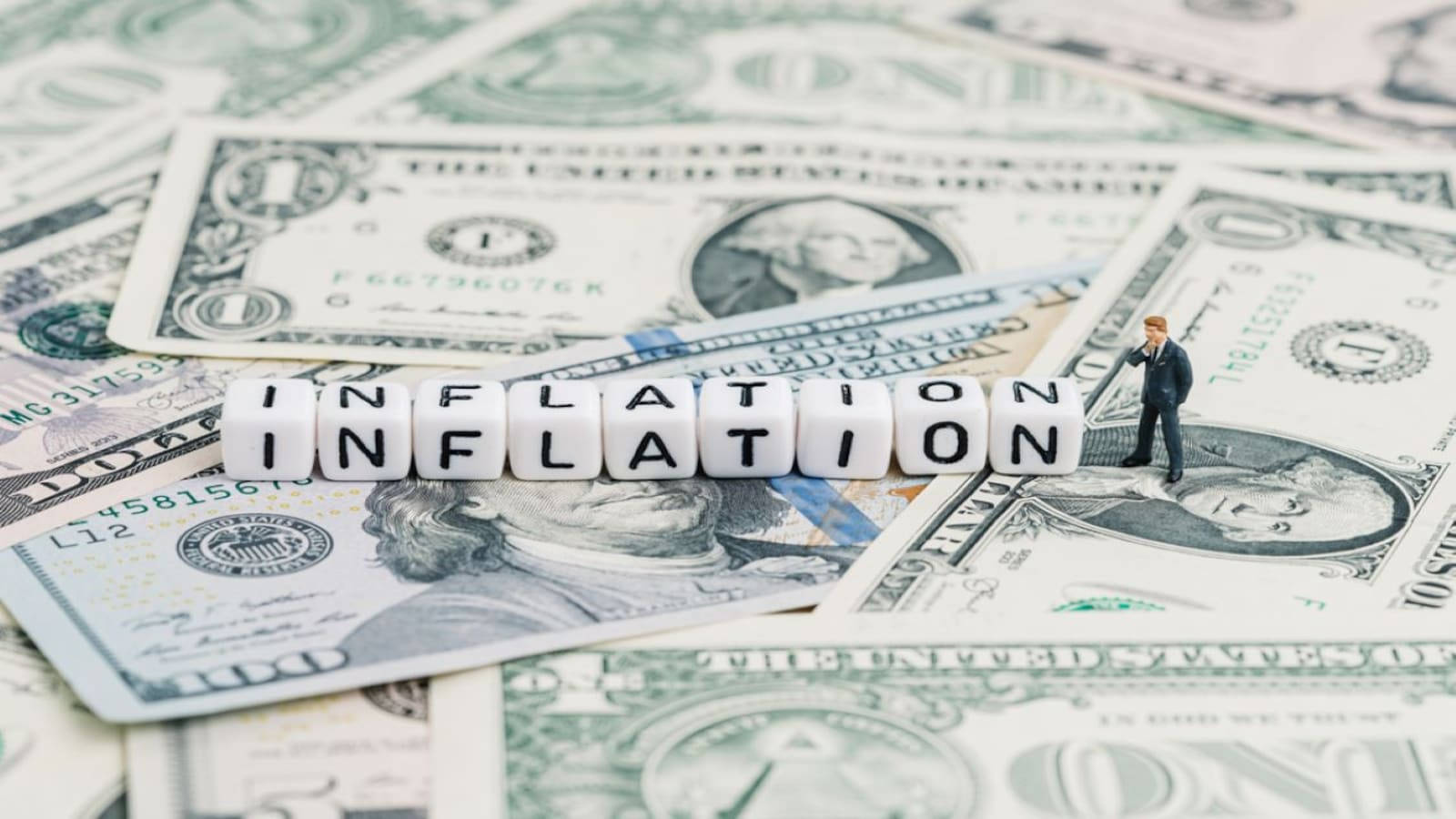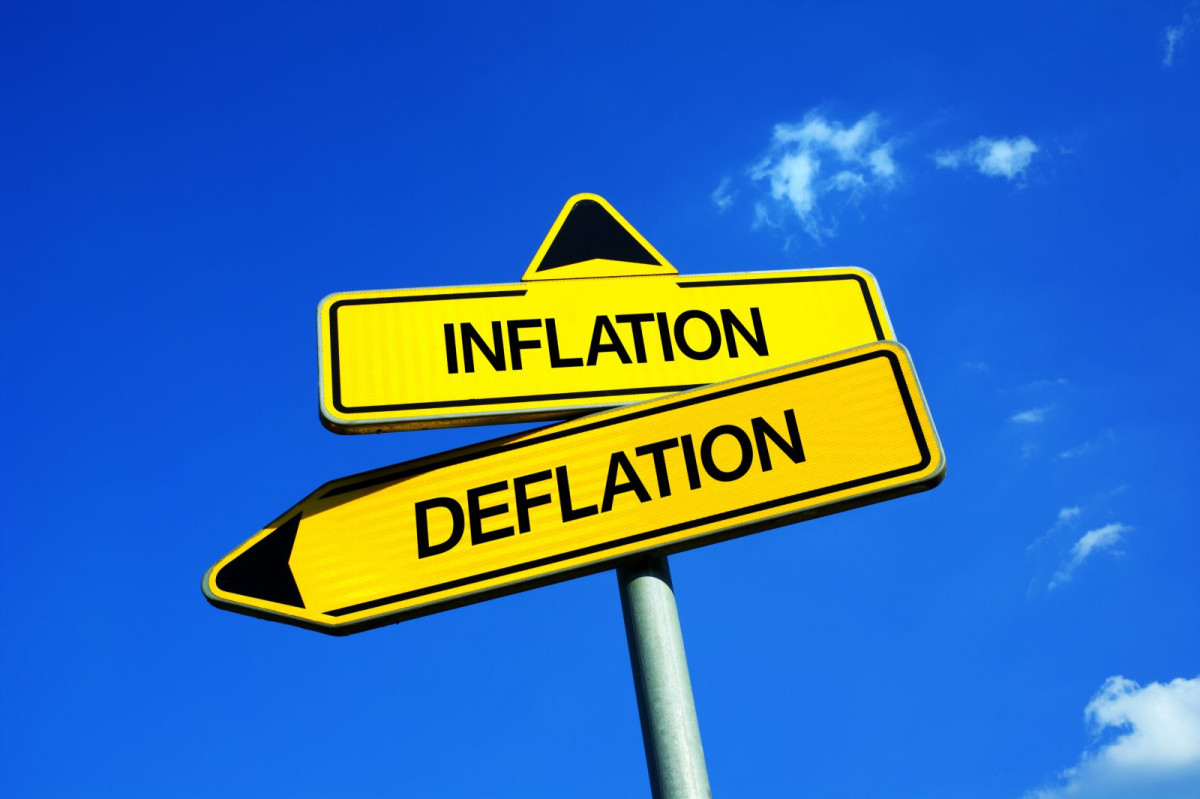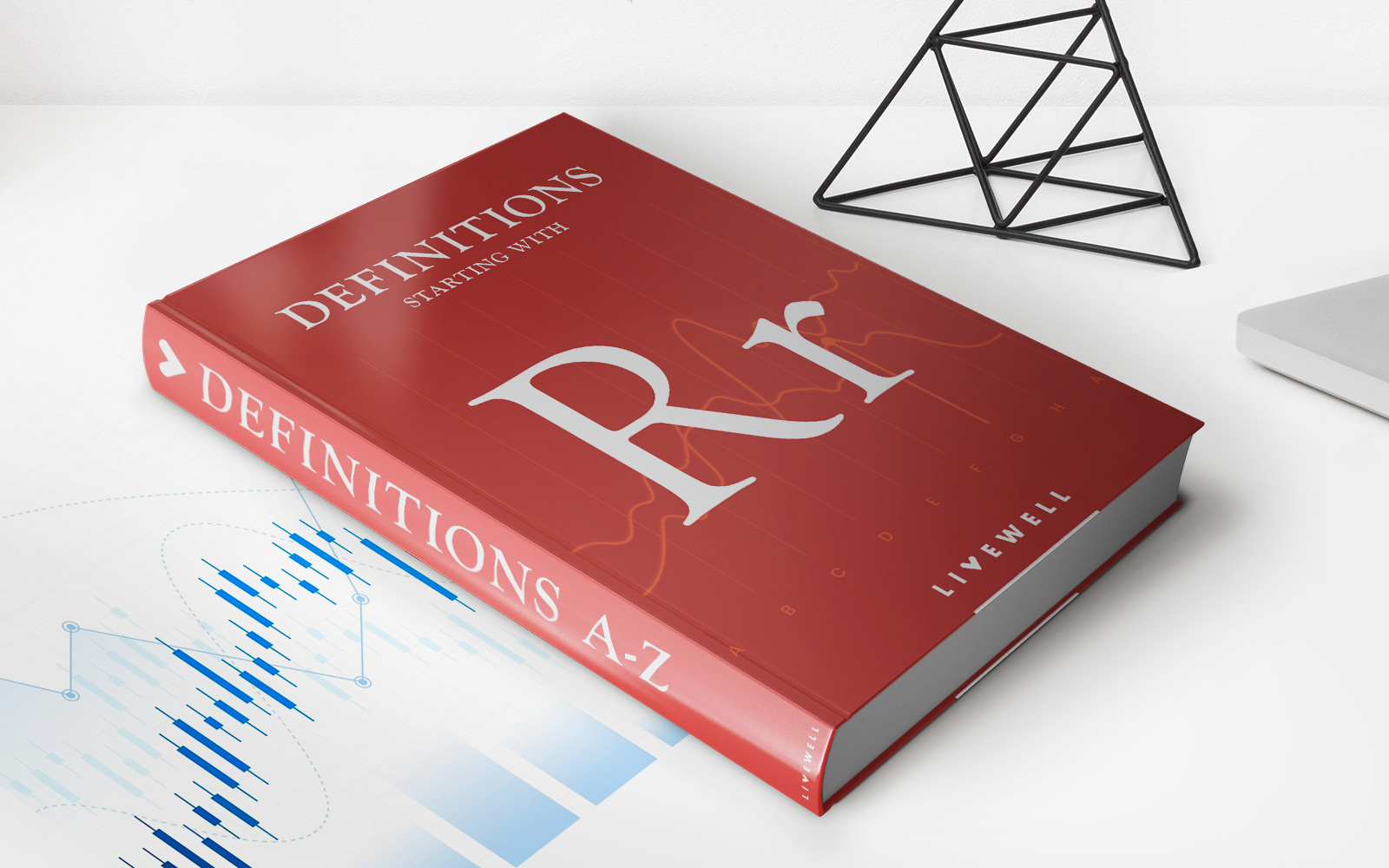

Finance
What Is Asset Price Inflation?
Published: October 19, 2023
Learn about asset price inflation and its impact on the finance industry. Explore the causes, consequences, and strategies to manage this economic phenomenon.
(Many of the links in this article redirect to a specific reviewed product. Your purchase of these products through affiliate links helps to generate commission for LiveWell, at no extra cost. Learn more)
Table of Contents
- Introduction
- Definition of Asset Price Inflation
- Causes of Asset Price Inflation
- Effects of Asset Price Inflation
- Examples of Asset Price Inflation
- How to Measure Asset Price Inflation
- Differences between Asset Price Inflation and Consumer Price Inflation
- Policy Implications of Asset Price Inflation
- Conclusion
Introduction
Welcome to the world of finance, where financial markets and economic indicators often dominate headlines. One term that is frequently discussed in the realm of finance is asset price inflation. Understanding what asset price inflation is, its causes, effects, and implications is crucial for investors, policymakers, and individuals interested in the financial landscape.
Asset price inflation refers to a sustained increase in the prices of various assets, such as stocks, real estate, bonds, or commodities, beyond what can be justified by fundamental economic factors. It is often characterized by a rapid and significant rise in asset values, driven by speculative demand or excessive market optimism. While asset price inflation can bring temporary gains for investors, it also poses risks and can have broader implications for the economy.
Asset price inflation is a phenomenon that has been observed in numerous financial markets throughout history. The dot-com bubble of the late 1990s and the housing market bubble that led to the global financial crisis in 2008 are two prominent examples of asset price inflation. In both cases, the prices of certain assets skyrocketed, fueled by speculative investment and an unrealistic belief in perpetual price increases.
The causes of asset price inflation are multifaceted and often interconnected. One of the primary triggers is excessive liquidity in the financial system. When there is an abundance of money available for investment, it can fuel demand for assets and drive their prices up. This can occur as a result of loose monetary policy by central banks, which aim to stimulate economic growth by reducing interest rates and increasing the supply of money.
Another important factor contributing to asset price inflation is investor sentiment and market psychology. When investors perceive that asset prices will continue to rise indefinitely, they may engage in speculative behavior, driving prices even higher. This can create a self-fulfilling prophecy as more investors join in and further inflate asset prices.
Furthermore, asset price inflation can be influenced by external factors such as changes in government policies, geopolitical events, or shifts in market regulations. The impact of these factors on asset prices can be significant and can create both volatility and distortions in financial markets.
Asset price inflation has profound effects on various stakeholders and the economy as a whole. On the positive side, it can generate wealth and profits for investors who are able to capitalize on rising asset prices. This can have a positive wealth effect, leading to increased consumer spending and economic growth. Additionally, asset price inflation can incentivize businesses to invest, expand, and innovate.
However, asset price inflation also carries risks and negative consequences. When asset prices become detached from their underlying fundamentals, a bubble can form, posing a threat to financial stability. If the bubble bursts, it can lead to significant market volatility and potentially trigger a financial crisis. Moreover, asset price inflation can exacerbate wealth inequality, as those with existing assets benefit the most from rising prices, while those without assets may struggle to enter the market.
In the following sections, we will explore the causes, effects, examples, and measurements of asset price inflation. Additionally, we will discuss the differences between asset price inflation and consumer price inflation, as well as the policy implications of this phenomenon.
Definition of Asset Price Inflation
Asset price inflation refers to a situation where the prices of assets, such as stocks, real estate, bonds, or commodities, rise over time at a rate that exceeds what can be justified by fundamental economic factors. It is essentially a surge in asset values driven by factors other than their intrinsic worth or underlying economic fundamentals.
This type of inflation is different from consumer price inflation, which refers to the general increase in the prices of goods and services in an economy. While consumer price inflation affects the cost of living and impacts individuals’ purchasing power, asset price inflation primarily affects the value of investments and the performance of financial markets.
Asset price inflation can manifest in various forms, depending on the asset class. For example, in the stock market, it can be seen as a rapid and sustained increase in the prices of shares, leading to a surge in market valuations, often referred to as a stock market bubble. In the real estate market, asset price inflation occurs when property prices rise significantly, leading to concerns about a housing market bubble. Similarly, in the bond market, asset price inflation can be observed as bond prices rise beyond their face value, resulting in lower yields.
One key feature of asset price inflation is the disconnect between asset prices and their underlying fundamentals. In a healthy market, asset prices should be driven by factors like supply and demand dynamics, earnings growth, interest rates, and economic conditions. However, during periods of asset price inflation, prices become decoupled from these fundamentals, often driven by speculative behavior, excessive market optimism, or excessive liquidity in the financial system.
It is important to note that asset price inflation is not necessarily a negative phenomenon in itself. In fact, it can be a natural part of market cycles and can provide opportunities for investors to generate substantial returns. However, when asset price inflation becomes excessive and unsustainable, it can pose significant risks to market stability and the broader economy.
Understanding the concept of asset price inflation is crucial for investors as it allows them to evaluate investment opportunities, assess potential risks, and make informed decisions. Moreover, policymakers need to monitor asset price inflation to ensure financial stability and take appropriate measures if necessary to prevent excessive price increases and the formation of asset bubbles.
Causes of Asset Price Inflation
Asset price inflation is driven by a combination of factors that can vary in their prominence and influence across different asset classes and market conditions. Understanding the causes of asset price inflation can provide valuable insights into the dynamics and potential risks associated with this phenomenon. Here are some common causes:
1. Excessive Liquidity: One of the primary catalysts for asset price inflation is excessive liquidity in the financial system. When there is a surplus of money available for investment, it can create a demand for assets and drive their prices higher. This excessive liquidity can be the result of loose monetary policy by central banks, such as lowering interest rates or engaging in quantitative easing, which increases the supply of money in the economy.
2. Speculative Behavior: Investor sentiment and market psychology play a significant role in driving asset price inflation. When investors perceive that asset prices will continue to rise, they may engage in speculative behavior, buying assets with the expectation of selling them at a higher price in the future. This speculative demand can create a self-fulfilling prophecy, further driving up asset prices and fueling the inflationary cycle.
3. Low Interest Rates: Low interest rates can encourage investors to seek higher returns in riskier assets, which can drive up prices. When interest rates are low, borrowing costs decrease, making it cheaper for individuals and companies to finance investments in assets such as real estate or stocks. This increased demand for assets can contribute to asset price inflation.
4. Investor Herding: Investor herding behavior, where investors follow the crowd and mimic the investment decisions of others, can also contribute to asset price inflation. When a particular asset class gains popularity, it can trigger a surge in demand as more investors rush to invest, driving up prices beyond what can be justified by fundamentals.
5. Global Economic Factors: Factors such as globalization, international capital flows, and global market interdependencies can influence asset price inflation. Economic developments in one country or market can have spillover effects on other markets, leading to contagion effects and amplified price movements. Events like financial crises or changes in trade policies can significantly impact asset prices globally.
6. Government Policies and Regulations: Changes in government policies, regulations, or fiscal stimulus programs can also play a role in driving asset price inflation. For example, tax incentives or subsidies provided by governments can influence demand for specific asset classes, leading to price increases. Additionally, changes in regulations that stimulate or restrict investment in certain assets can have an impact on their prices.
It’s important to note that asset price inflation is often the result of a combination of these factors, and their relative importance may differ depending on the specific market conditions. Monitoring and understanding these causes can help investors and policymakers assess the potential risks and implications of asset price inflation and take appropriate actions to maintain market stability and mitigate any negative consequences.
Effects of Asset Price Inflation
Asset price inflation can have far-reaching effects on various stakeholders, financial markets, and the broader economy. Understanding these effects is crucial for policymakers, investors, and individuals who want to grasp the implications of this phenomenon. Here are some key effects of asset price inflation:
1. Wealth Creation and Destruction: Asset price inflation can generate significant wealth for investors who hold assets that experience substantial price increases. This can include individuals who hold stocks, real estate, or other assets that rise in value. On the other hand, when asset prices deflate or experience a significant decline, investors can suffer substantial losses, leading to wealth destruction and financial instability.
2. Impact on Consumption and Saving: Asset price inflation can have a direct impact on household consumption and saving patterns. As asset prices rise, individuals may feel wealthier and more confident in their financial standing, leading to increased consumption. This wealth effect can drive economic growth by boosting consumer spending. Conversely, when asset prices drop, households may become more cautious and increase their saving levels, leading to a decrease in consumption and economic activity.
3. Financial Market Stability: Excessive asset price inflation can pose risks to financial market stability. When asset prices become detached from their underlying fundamentals, it can create a bubble, characterized by an unsustainable rise in prices. If the bubble bursts, it can lead to sudden and significant market corrections, causing instability and potential financial crises. Market participants, including investors, financial institutions, and regulators, need to closely monitor asset price movements to detect potential signs of instability.
4. Impact on Income Distribution: Asset price inflation can exacerbate wealth inequality within societies. As asset prices rise, those who already own assets benefit significantly from the price increases, while those without assets or with limited access to assets may struggle to enter the market and miss out on wealth accumulation opportunities. This widening wealth gap can have social and economic implications, affecting overall societal well-being and equality.
5. Business Investment and Innovation: Asset price inflation can influence business investment decisions. When asset prices rise, companies may feel more confident in investing in expansion, innovation, and capital projects, as they perceive increased value in their assets. This increased investment can fuel economic growth and productivity. Conversely, a sharp decline in asset prices can lead to decreased business investment, potentially dampening economic activity.
6. Central Bank Policy and Interest Rates: Asset price inflation can also impact central bank policy decisions, particularly in relation to interest rates. Central banks monitor asset price movements to assess the state of financial markets and their effect on overall economic stability. In response to asset price inflation, central banks may consider adjusting interest rates to curb excessive speculation or to prevent the formation of asset bubbles.
It’s important to note that the effects of asset price inflation can be both positive and negative, depending on various factors such as the extent of price increases, market conditions, and the overall health of the economy. Monitoring and understanding these effects is essential for policymakers to make informed decisions and for individuals and businesses to navigate the ever-changing financial landscape.
Examples of Asset Price Inflation
Throughout history, there have been notable examples of asset price inflation that have had a significant impact on financial markets and the economy. These examples serve as cautionary tales and help to illustrate the consequences of excessive asset price inflation. Here are a few prominent examples:
1. The Dot-com Bubble: One of the most well-known examples of asset price inflation is the dot-com bubble of the late 1990s and early 2000s. During this period, there was a surge in investment and speculation in internet-related companies, driven by the rapid advancement of technology and heightened market optimism. The stock prices of many tech companies soared to unprecedented levels, far surpassing their underlying value. However, the bubble eventually burst in early 2000, leading to a dramatic market crash and significant wealth destruction.
2. Housing Market Bubble (2007-2008): The housing market bubble that led to the global financial crisis in 2008 is another noteworthy example of asset price inflation. In the years leading up to the crisis, there was a widespread belief that housing prices would continue to rise indefinitely, fueled by lax lending standards, low interest rates, and excessive risk-taking by financial institutions. As a result, housing prices soared to unsustainable levels, leading to a housing market bubble. When the bubble burst, it triggered a severe economic downturn and a global financial crisis.
3. Bitcoin and Cryptocurrency Boom (2017): In 2017, there was a remarkable surge in the prices of cryptocurrencies, particularly Bitcoin. Speculative fervor and optimistic expectations of blockchain technology led to a massive influx of investors into the cryptocurrency market. The price of Bitcoin skyrocketed to unprecedented levels, reaching close to $20,000 per coin in December 2017. However, the bubble eventually burst, and the market experienced a significant correction, with prices plummeting in the following months.
4. Japanese Asset Price Bubble (1980s): In the late 1980s, Japan experienced an unprecedented asset price bubble driven primarily by surging real estate and stock prices. The Japanese stock market index, known as the Nikkei, reached its peak in 1989 at nearly 39,000 points, a level that has not been surpassed to this day. However, the bubble eventually burst, leading to a prolonged period of recession and economic stagnation, often referred to as the “Lost Decade.”
These examples demonstrate the risks and consequences of asset price inflation when prices detach from their underlying economic fundamentals, leading to the formation of bubbles. It is essential to closely monitor asset price movements and ensure that they are supported by sustainable factors to prevent excessive speculation and financial instability.
How to Measure Asset Price Inflation
Measuring asset price inflation is a complex task that requires the use of various indicators and methodologies. While asset price inflation may not be as straightforward to measure as consumer price inflation, there are several commonly used methods and indicators that can provide insights into the magnitude and direction of asset price movements. Here are some key approaches:
1. Price Indices: Just as consumer price inflation is measured using price indices like the Consumer Price Index (CPI), asset price inflation can also be tracked using specific indices for different asset classes. For example, the S&P 500 index is commonly used as a benchmark for U.S. stock market performance, while real estate price indices provide insights into housing market price movements. These indices aggregate price data from selected assets to represent the overall performance and direction of the respective asset class.
2. Valuation Ratios: Valuation ratios, such as price-to-earnings (P/E) ratio for stocks or price-to-earnings-to-growth (PEG) ratio, can be used to assess whether asset prices are overvalued or undervalued. When these ratios are significantly higher than historical averages or the levels of comparable assets, it may indicate a higher risk of asset price inflation. However, it’s important to note that valuation ratios alone might not provide a comprehensive picture and should be considered alongside other indicators.
3. Market Capitalization: Monitoring changes in market capitalization can be helpful in assessing the size and direction of asset price movements. Market capitalization represents the total market value of a company’s outstanding shares, and it can provide insights into investors’ perception of a company’s worth. An increase in market capitalization can indicate rising asset prices, while a decrease can suggest a decline in market values.
4. Trading Volumes: Tracking trading volumes can offer clues about the level of investor participation and the intensity of buying or selling pressure in the market. Higher trading volumes during periods of rising asset prices may indicate increased demand and potentially signal asset price inflation. Conversely, a decrease in trading volumes can suggest waning investor interest and potential price corrections.
5. Price-to-Rent Ratio: In the real estate market, the price-to-rent ratio can be used as an indicator of potential asset price inflation. This ratio compares the price of property to the cost of renting it. When the price-to-rent ratio is significantly higher than historical averages, it may indicate that property prices are becoming overvalued and vulnerable to a correction or bubble.
It’s important to note that measuring asset price inflation is not an exact science, and different indicators may provide contrasting signals. Therefore, it is wise to consider multiple indicators and employ a holistic approach when assessing the level of asset price inflation. Moreover, conducting thorough research, consulting experts, and analyzing long-term trends can help in gaining a comprehensive understanding of asset price movements.
Differences between Asset Price Inflation and Consumer Price Inflation
While both asset price inflation and consumer price inflation are forms of inflation, there are significant differences that set them apart in terms of their impact and measurement. Here are some key differences between asset price inflation and consumer price inflation:
1. Focus of Measurement: Consumer price inflation focuses on changes in the prices of goods and services that consumers regularly purchase, such as food, housing, transportation, and healthcare. It measures the overall cost of living for individuals and households. On the other hand, asset price inflation focuses on changes in the prices of assets, such as stocks, real estate, bonds, or commodities, which reflect investment values and financial market performance.
2. Impact on Individuals: Consumer price inflation directly affects individuals’ purchasing power and the affordability of essential goods and services. It can erode the value of money and reduce the standard of living. Asset price inflation, on the other hand, primarily affects the value of investments. It can create opportunities for investors to accumulate wealth if they hold appreciating assets, but it can also lead to risks if asset prices become detached from their underlying fundamentals and result in market volatility or asset bubbles.
3. Measurement Methodologies: Consumer price inflation is typically measured using price indices, such as the Consumer Price Index (CPI), which tracks changes in the average prices of a basket of goods and services. These indices are calculated based on data collected from regular consumer spending surveys. Asset price inflation, on the other hand, can be measured using various indicators such as price indices specific to asset classes, valuation ratios, trading volumes, and market capitalization.
4. Drivers and Influences: Consumer price inflation is driven by factors such as changes in the costs of production, labor market dynamics, supply and demand imbalances, and monetary policy. It can be influenced by factors like energy prices, wage growth, taxes, and government policies. Asset price inflation, on the other hand, is influenced by factors like investor sentiment, market psychology, changes in interest rates, speculative behavior, and external economic events. Excessive liquidity and loose monetary policy can also contribute to asset price inflation.
5. Economic Implications: Consumer price inflation has direct implications for monetary policy, as central banks use interest rates as a tool to control inflation and stabilize the economy. High consumer price inflation can lead to higher interest rates, which can impact borrowing costs, investment decisions, and overall economic activity. Asset price inflation, on the other hand, poses challenges for policymakers as it can be more difficult to detect, measure, and address. Asset price inflation can also affect financial stability and the distribution of wealth, impacting economic inequality.
6. Policy Considerations: Given the differences in their nature and impact, policymakers need to consider both consumer price inflation and asset price inflation when formulating economic policies. While central banks typically focus on consumer price inflation when setting interest rates, they also need to monitor asset price inflation to detect potential risks to financial stability and adjust policies accordingly.
In summary, consumer price inflation and asset price inflation represent distinct aspects of inflation with different measurement methodologies, influences, impacts, and policy considerations. Understanding the differences between the two is essential for policymakers, investors, and individuals alike to make well-informed decisions in managing their finances and assessing the health of the economy.
Policy Implications of Asset Price Inflation
Asset price inflation poses significant policy implications for central banks, regulators, and policymakers. Managing asset price inflation requires careful consideration and appropriate measures to maintain financial stability and mitigate potential risks. Here are some key policy implications associated with asset price inflation:
1. Monetary Policy: Central banks play a crucial role in managing asset price inflation by implementing monetary policy measures. Central banks use interest rates as a tool to influence borrowing costs, investment decisions, and overall economic activity. In the context of asset price inflation, central banks may consider taking a more proactive stance by using macroprudential tools, such as loan-to-value ratios or capital requirements, to control excessive risk-taking and curb speculative behavior in the market.
2. Financial Regulation: Regulators need to monitor and address potential risks associated with asset price inflation. This includes ensuring that financial institutions have sufficient capital buffers to withstand potential shocks resulting from asset price corrections. Strengthening regulatory frameworks, enhancing risk assessment methodologies, and implementing measures to improve market transparency can contribute to overall financial stability and help prevent the formation of asset price bubbles.
3. Macroprudential Policy Measures: Alongside monetary policy and financial regulation, policymakers may use macroprudential policy measures to address asset price inflation. These measures focus on systemic risks that can arise from excessive credit growth, rising leverage, or unsustainable asset price increases. Examples of macroprudential tools include loan-to-value ratio limits, debt-to-income ratios, and capital buffers, which can help contain excessive risk-taking in the financial system and prevent the build-up of unsustainable asset price inflation.
4. Communication and Guidance: Clear and effective communication from central banks and regulators is essential to manage expectations and guide market participants. Transparent communication about policy intentions, assessments of financial market conditions, and potential risks can help market participants make informed decisions and reduce the likelihood of excessive speculation and mispricing of assets.
5. Strengthening Financial Literacy: Improving financial literacy among investors and consumers is vital for navigating the complexities of asset price inflation. Educating individuals about the risks associated with investing in overvalued assets, promoting diversification, and providing tools and resources to enhance financial decision-making can empower individuals to make informed choices and reduce vulnerabilities to potential losses during times of asset price corrections.
6. International Cooperation: Asset price inflation can have cross-border spillover effects, particularly in a globally interconnected financial system. Cooperation among international regulatory bodies and central banks is crucial in addressing potential risks arising from asset price inflation. Sharing best practices, coordinating policy actions, and enhancing cross-border data exchange can contribute to a more robust and resilient global financial system.
Adopting a comprehensive and well-coordinated approach that combines monetary policy, financial regulation, macroprudential measures, effective communication, financial literacy initiatives, and international cooperation can help mitigate the risks associated with asset price inflation. By doing so, policymakers can strive for stable and sustainable financial markets that support long-term economic growth.
Conclusion
Asset price inflation is a phenomenon that can have profound implications for financial markets and the broader economy. Understanding its causes, effects, and measurement is essential for investors, policymakers, and individuals navigating the complex world of finance.
Asset price inflation refers to the sustained increase in the prices of assets that exceeds what can be justified by fundamental economic factors. It is often driven by factors such as excessive liquidity, speculative behavior, low interest rates, and investor sentiment. When asset prices detach from their underlying fundamentals, it can lead to asset bubbles and pose risks to financial stability.
The effects of asset price inflation are diverse. While it can create opportunities for wealth generation and incentivize business investment, it can also lead to wealth inequality and financial market instability. Moreover, asset price inflation can impact consumer behavior, affect monetary policy decisions, and have broader economic implications.
Measuring asset price inflation can be challenging, but it can be done through various indicators such as price indices, valuation ratios, and trading volumes. Monitoring these indicators helps policymakers and investors assess the magnitude and direction of asset price movements.
Asset price inflation differs from consumer price inflation, as it focuses on the prices of assets rather than goods and services. While consumer price inflation impacts individuals’ purchasing power, asset price inflation primarily affects the value of investments and financial markets.
To manage asset price inflation, policymakers need to employ a range of policy tools, including monetary policy, financial regulation, macroprudential measures, and effective communication. Strengthening financial literacy and promoting international cooperation are also crucial in addressing the risks associated with asset price inflation.
In conclusion, understanding and monitoring asset price inflation is essential for maintaining financial stability, promoting sustainable economic growth, and safeguarding the interests of investors and the broader population. By being aware of the causes, effects, and measurement of asset price inflation, individuals and policymakers can make informed decisions to navigate the ever-changing financial landscape.














